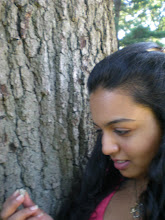The one thing that did bother me a little bit about Kelsey's book was the abundant use of asterisks. While it's not nearly as profuse as Minnis's ellipses, I also did not find them nearly as useful. They seemed to break up what seemed like a natural rhythm flowing through her poems. The asterisks seemed like they were there more because they were a pretty symbol, rather than being there to indicate a "filled silence" like in Minnis's book. I really liked the rhythms that Kelsey creates on her own through repetition and rhyme, and I felt like poems that had asterisks all over the place distracted from that. For example, I liked these asterisk-free poems:
Flood/Fold - Aperture 3
Halting into the mouth I thought
the image of the bird would sing but it wouldn’t
though the mouth says I am content now with domestic things
the sound of the broom on the floor body moving
the way a woman’s body has been seen moving
a simpler song and more sweet some would say when heard or read
as the birds wake and there is no reason for waking oneself
on a day like this beginning in curtain light and oranges.
and
Movements
We are the ones
who are held and hold,
for the travelers all aspire to this passage,
we among them, and only two
passing, a tolling of bells
as if in a medieval city,
crier, town spire—this
burgeoned from the personal day,
signing the contract, contracting
so tightly that I out at the edges—
the breath—the song let loose—
And so unto the electrical bells, sing,
washing over bones to heaven,
heart to earth. Not any other way
to do it, though the hand aches
from holding and
elemental of the heart: hooded.


Sachi-
ReplyDeleteThe quotes you provide for the striking images created by Karla Kelsey are brilliant. Those phrases really standout among the others. This is in part because of the words she combines to create an image. But, I am wondering if she did not choose these exact words would these images be as startling and emotive? The words she combines to create these images are so effective because of the sounds that they create and the colors that we are able to see and feel through her descriptions. One thing in particular that I like in these examples that you give are the juxtaposition of the hard and soft sounds of the words she uses. Her use of asterisks did not bother me in the way that the ellipses used by other authors had bothered me previously. After hearing her explanation for using them I was more able to see how they were effective in conveying a pause to the reader.